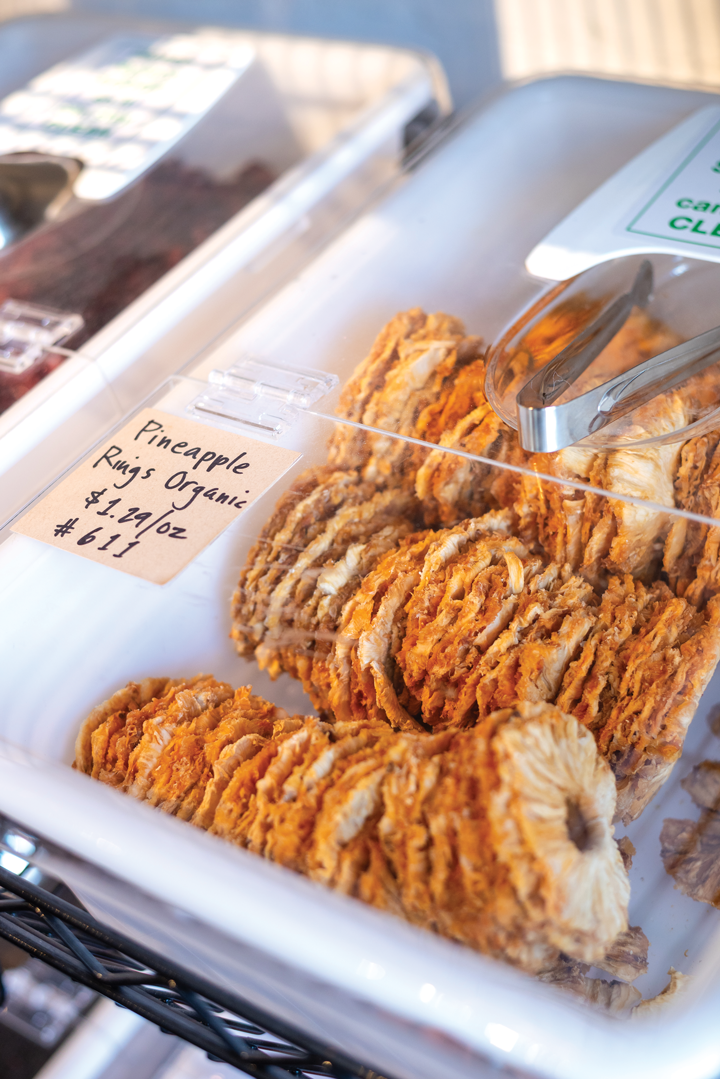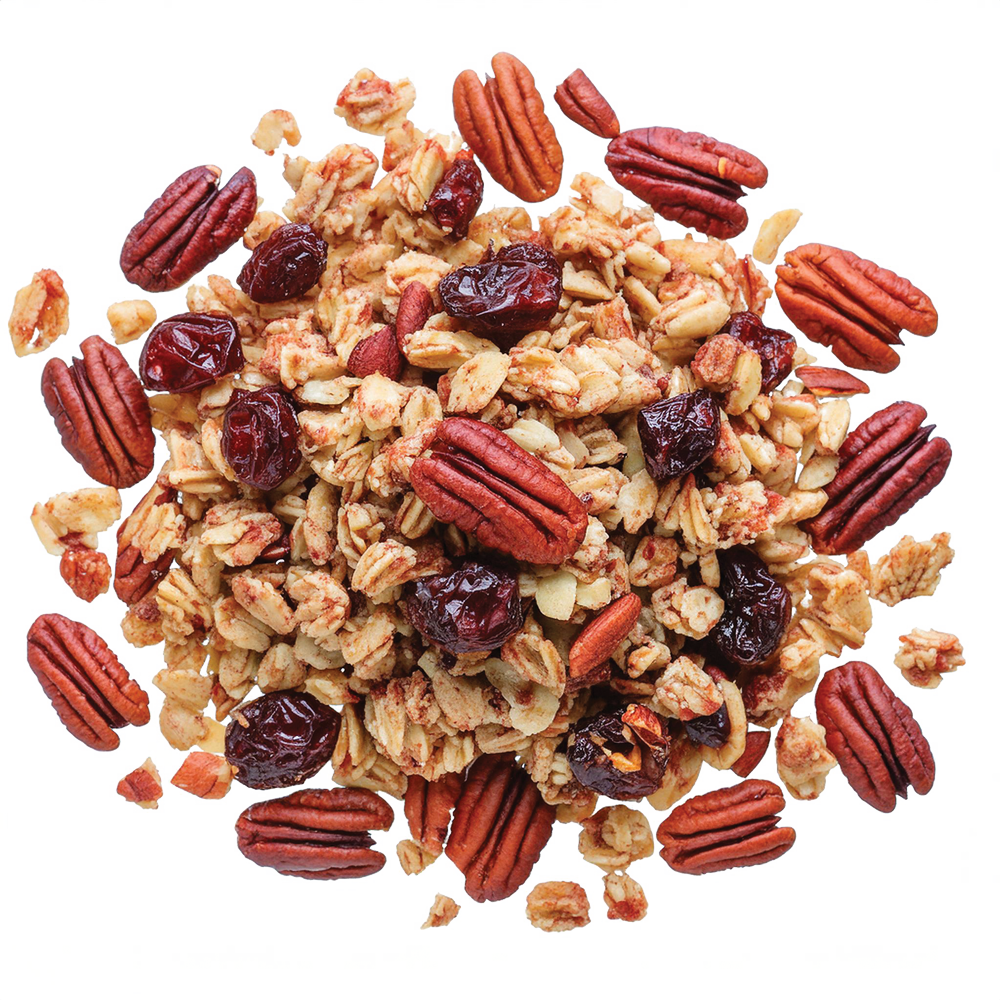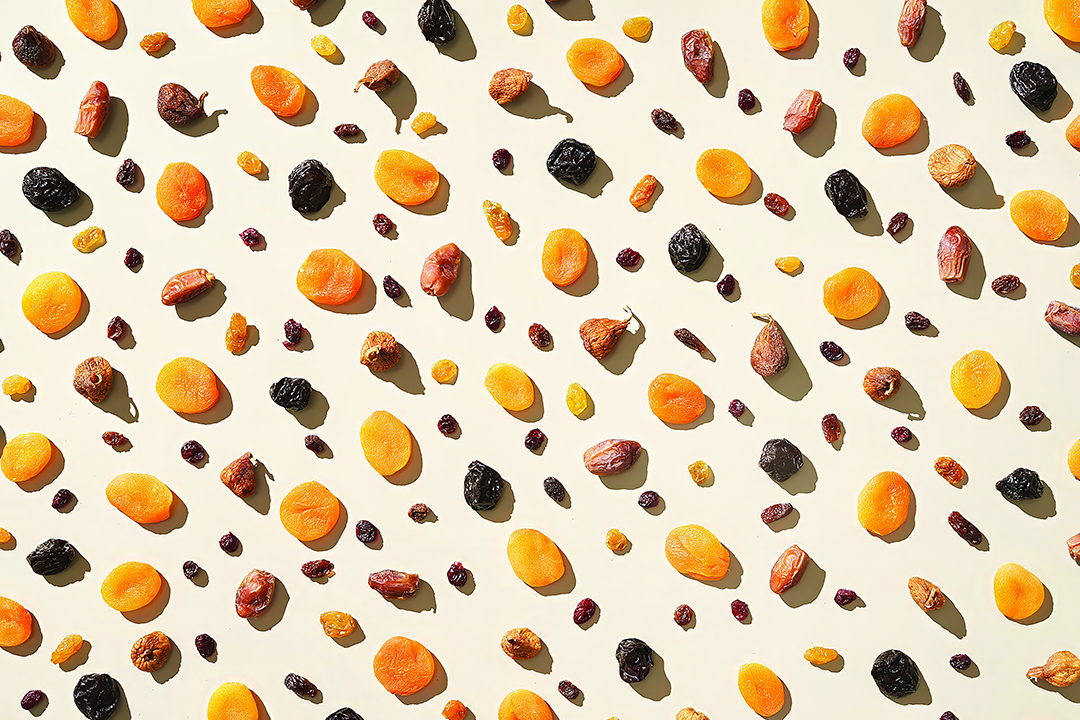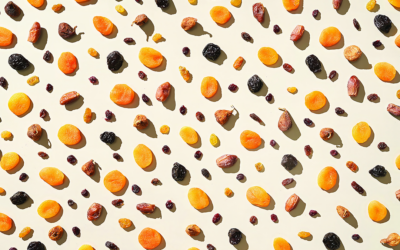It’s 3 p.m. and your stomach is grumbling. You’re craving potato chips (no judgment), though you’ve decided to be “good” and grab a handful of dried apricots instead. But kudos on your snack choice aren’t in order—yet.
Eating fruit is generally a good idea, however, eating too much of it will cost you calories, says Matt Preston, a nutrition planner, personal coach and owner of Colorado Nutrition in Fort Collins and Boulder.
“There is not much calorie difference between a whole apple and a dried apple, but dried fruit is denser by volume,” he says.
Because dried fruits are more concentrated, a serving is smaller than fresh fruits, according to Jessica Clifford, a Colorado State University Extension specialist and registered dietician nutritionist.
“It’s half a cup of fresh fruit versus a quarter cup of dried,” she says. “Think about eating more than three fresh apricots or 20 fresh grapes. It’s easy to eat a large amount of dried fruit, but calorie-wise, there is such a thing as too much of a good thing.”
Health benefits of dried fruit
Dried fruit does have many advantages. Like fresh fruit, dried versions provide vitamins, minerals, fiber and phytochemicals, which are compounds produced by plants that protect against fungal, bacterial and viral infections. Eating them is linked with other health benefits, like lowering the risk of diabetes, cancer, obesity, cardiovascular diseases and more, according to a 2023 study in the peer-reviewed journal, Nutrients.
“Nutritional benefits of dried fruits are great because they provide a shelf-stable, convenient alternative to fresh fruits,” Clifford says. “There are some nutritional losses due to heat in the air from drying, specifically Vitamins A and C because they’re susceptible to heat damage, but it’s minimal.”
One thing to watch out for is dried fruit that has added sugars, like some mangos and banana chips. If you dry it yourself, you can avoid those added sugars, Clifford says.

Minimal Market, Loveland. Photo by Jordan Secher.
Dried fruit in bulk
Ben Pilon, co-owner of Minimal Market in downtown Loveland, keeps 10-15 organic dried fruit options stocked. The store primarily offers locally sourced bulk goods that are sold by weight, and you can sample them before buying. There are also bulk spices, grains, cereals, seeds, nuts and even chocolate, so it’s easy to make your own trail mix, Pilon says.
Ben and his partner, Randi, opened Minimal Market in January 2023 as a way of counteracting our overly processed food system and reducing waste by encouraging customers’ reuse of containers. The store is partly driven by their goal to live healthier, including sourcing foods in their natural form.
“A few of our dried fruit choices are sweetened, like a cranberry sweetened with apple juice, and the banana chips, but most are not,” he says. “Sugar has made its way into a lot of foods you wouldn’t think it should be in. Fruit has naturally occurring fructose, and some amount is fine, but you want to be careful about added sugar.”
Marisa Bunning, a CSU Extension specialist in food safety and professor of food science and human nutrition, keeps a mason jar filled with dried blueberries, cherries and raisins to put on yogurt and granola, toss into salads or cook with meats.
“If I wasn’t doing it, I wouldn’t be consuming that equivalent of fresh fruit,” Bunning says. “It gives consumers an opportunity to include those types of phytochemicals in their diets.”
Dried fruits are also lighter and more portable than many whole fruits, making them easier to take hiking, camping or traveling.
“Dried fruit is quieter on an airplane than an apple, and it’s more packable,” Bunning says. “A pear or a peach wouldn’t survive in a backpack, but if they’re dried, they’re good to go.”
Preston likes that dried fruits are easy for active people to carry. “Paired with granola or a trail mix, that’s a calorie-dense food for athletes,” he says.
Drying fruit at home
While you can dry fruit in an oven or electric food dehydrator at about 140° F, Bunning prefers a dehydrator with an adjustable thermostat to achieve consistent, energy-efficient, safe results. “An initial investment of about $100 should last years,” she says.
Solar drying isn’t consistent either, she says. “If heat isn’t high enough, that can facilitate bacterial growth, or if a certain level of dryness isn’t reached after storing the dried fruit in a jar and there’s still moisture, there can be mold growth.”
When drying fruits and vegetables at home, she recommends checking Preserve Smart, a CSU Extension app with food preservation recipes and instructions. The app tests recipes for preservation and adapts them for success at any geographic elevation.
The CSU Extension offers these quick tips for making DIY dried fruit:
Select fresh, fully ripened fruit. Crack fruits with tough skins (grapes, prunes, dark plums, cherries, figs and firm berries) so the moisture inside can evaporate. Simply dip them in boiling water for 30-60 seconds, then dip them in cold water and drain them on a towel before placing them on drying trays.
Pretreat the fruit pieces. This prevents darkening and helps to destroy bacteria. Dip the fruit in ascorbic acid, citric acid, lemon juice or sodium metabisulfite solution before drying.
When dry, allow the fruit to condition. Loosely fill plastic or glass containers two-thirds of the way with cooled, dried fruit, then lightly cover the opening to allow any residual moisture to evenly distribute before packaging it for storage. This takes 4-10 days and reduces the chances of spoilage and mold growth.
Package it in tightly sealed containers. Store the fruit in a cool, dry place or in a refrigerator or freezer. Use within a year.
For more fruit drying tips, download the Preserve Smart app or visit tinyurl.com/4zcvsbsa.

Cranberry Pecan Granola
Serves 6
Courtesy of FoodSmart Colorado,
CSU Extension
Ingredients
3 cups oats
1 cup chopped unsalted pecans
1 cup dried cranberries
1/3 cup olive oil
1/3 cup honey
2 teaspoons vanilla extract
1 tablespoon ground cinnamon
1/4 teaspoon fresh grated nutmeg
1/8 teaspoon ground cloves
1/4 teaspoon salt
Directions
1. Preheat oven to 325° F. Coat a baking sheet with cooking spray.
2. Combine oats and pecans in a large bowl. In a small saucepan, combine honey, oil and spices. Warm over low heat, stirring frequently until mixture becomes thin. Remove from heat, stir in vanilla.
3. Pour warm honey mixture over oats and pecans, then toss to coat evenly. Spread mixture onto prepared baking sheet and bake for 25 minutes. Gently flip with a spatula, add cranberries and bake for 10 more minutes (until dry and evenly brown). Cool.







